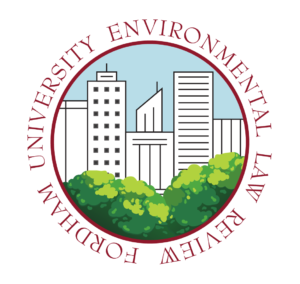COVID-19 & Its Spiraling Effect On Endangered Species

by Loren Naftali
The Coronavirus Pandemic has left many aspects of life disturbed and uncertain, and one of the most concerning and least discussed is the future of endangered species in America and around the world. Netflix’s notorious Tiger King introduced viewers to the appalling network of Tiger collectors in America, yet, left many captivated with the criminal credibility of Carole Baskin rather than the underlying issue: the commodification and abuse of an endangered species.
Congress passed the Endangered Species Act (ESA) in 1973, with a purpose to protect and recover imperiled species and the ecosystems upon which they depend. The law has protected and preserved wildlife all over the nation since. Originally, the decision in determining whether a species was endangered relied “solely on the basis of the best available scientific and commercial information regarding a species’ status, without reference to possible economic or other impacts of such determination.” Unfortunately, the Trump Administration’s amendments to the ESA, removing the phrase “without reference to possible economic or other impacts of such determination,” have weakened the conservation law and left its fate in disarray. The government can now weigh the benefits of protecting a species against the concern that protection will negatively affect a company’s profit.
With COVID-19 spreading like wildfire, many corporations have reduced their employees’ on-site presence, including the US Environmental Protect Agency. The Center for Biological Diversity filed suit against the US Environmental Protect Agency for violating the Endangered Species Act, 16 U.S.C §§ 1531–1544 (“ESA”), in connection with the EPA’s March 26, 2020 Memorandum titled “COVID‐19 Implications for EPA’s Enforcement and Compliance Assurance Program.” Section 7 of the ESA requires federal agencies to “insure that any action authorized, funded, or carried out by such agency … is not likely to jeopardize the continued existence of any endangered species or threatened species or result in the destruction or adverse modification of habitat of such species which is determined … to be critical.” The EPA has taken discretionary action that effectively authorizes regulated entities to refrain from routine compliance monitoring, integrity testing, sampling, lab analysis, training, and reporting or certification where the affected companies allege that such actions are “not reasonably practicable due to COVID‐19.” The cessation of monitoring and reporting requirements under the Clean Water Act, Clean Air Act, Safe Drinking Water Act, Resource Conservation and Recovery Act, and Emergency Planning and Community Right‐to‐Know Act, in addition to the EPA’s delegation to regulated industries to suspend this testing without public disclosure or justification, leaves endangered wildlife dangerously vulnerable.
Globally, precautions have been implemented to protect humans from the pandemic at hand, many of which have left national parks abandoned from human interaction. Without tourism, there is no funding. Without government agency routine testing and the necessary words spelled out in the ESA, there is merely a sheer blanket left behind to shield imperiled species. The fate of endangered species lies unknown, amongst the other environmental crises shoved aside in the midst of a whirlwind pandemic.

